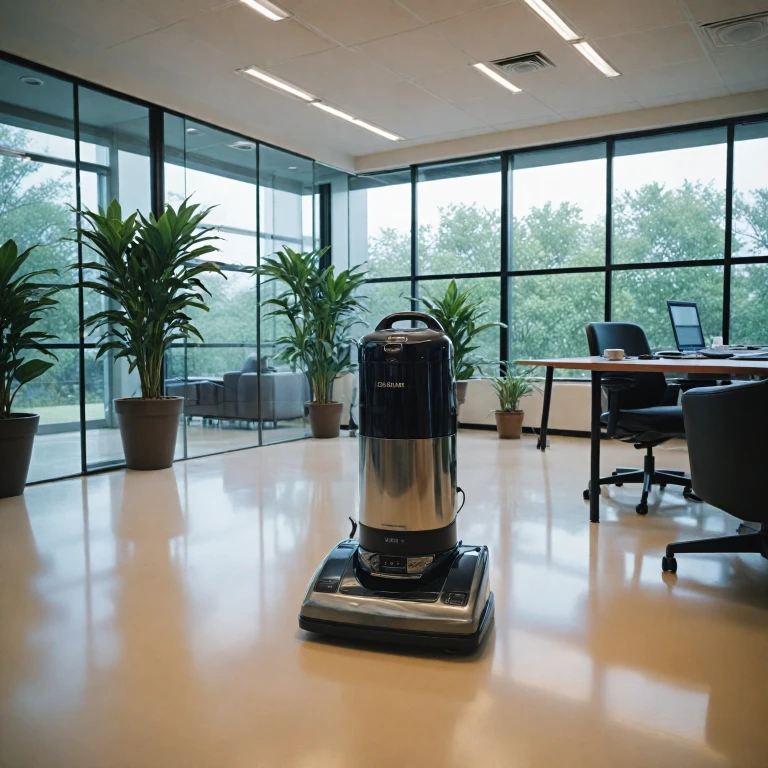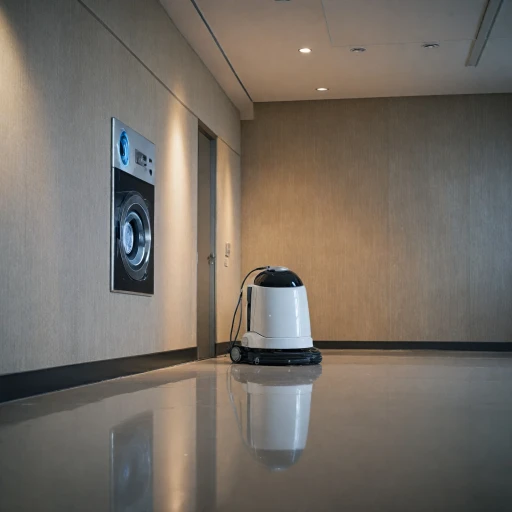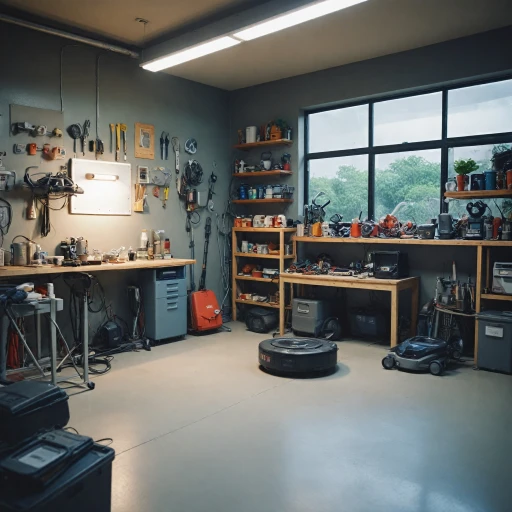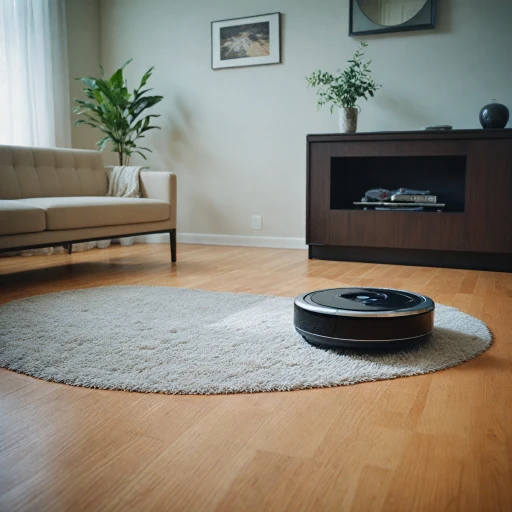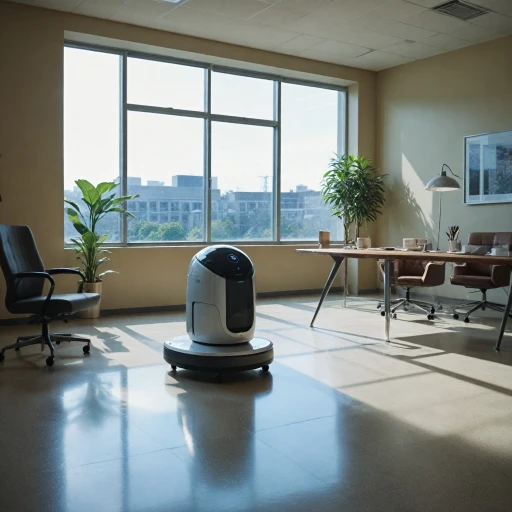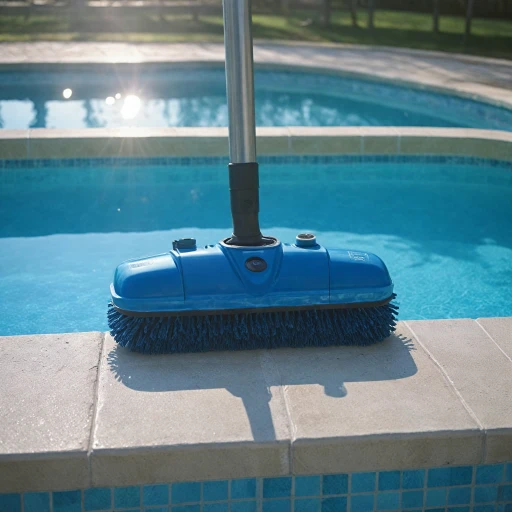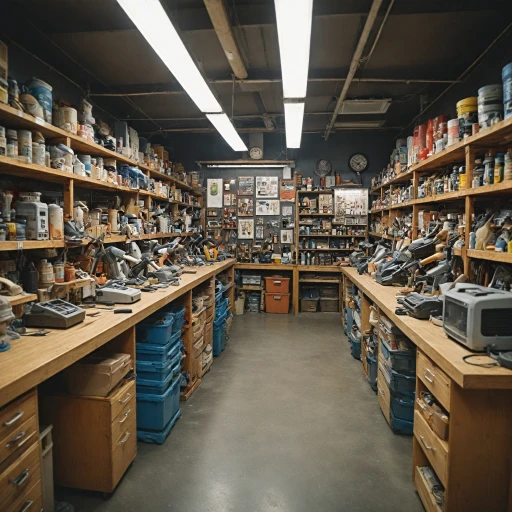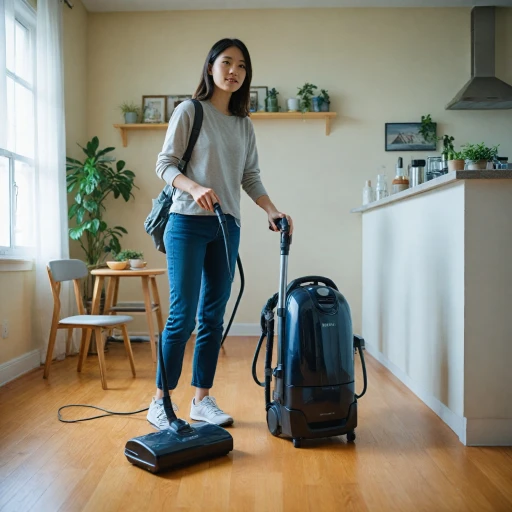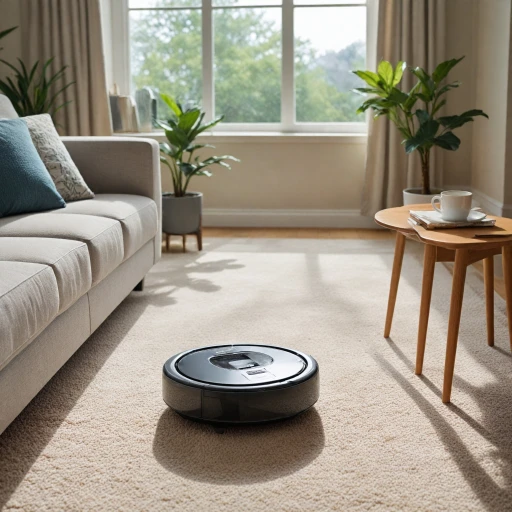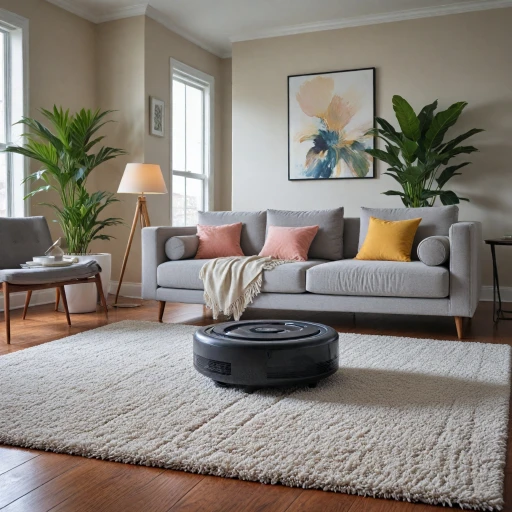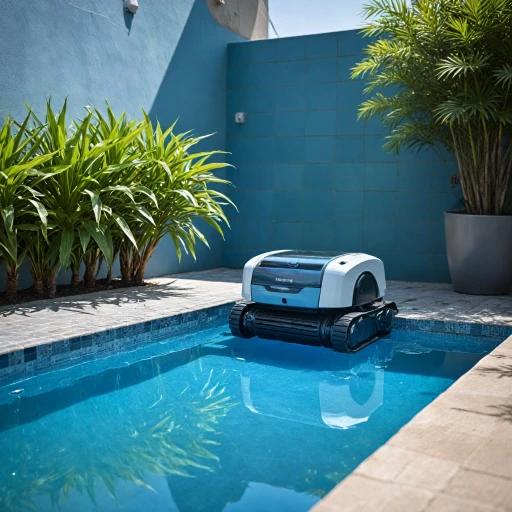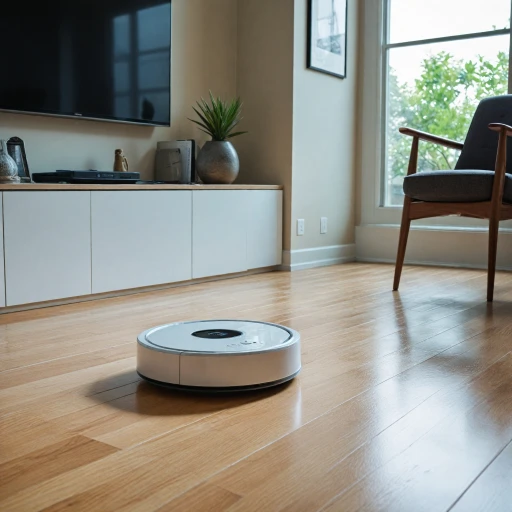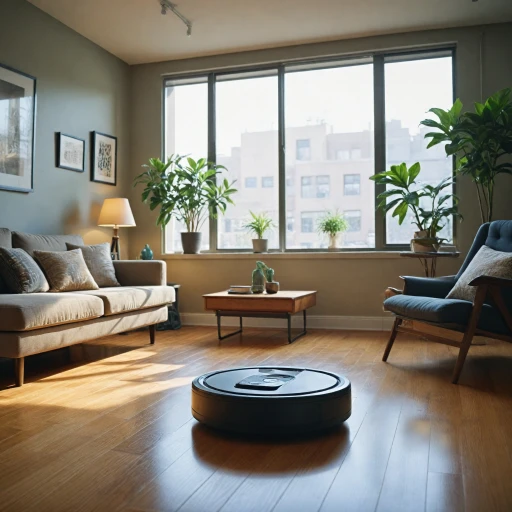
Understanding Commercial Vacuum Cleaners
Exploring the Different Types
In commercial settings, understanding the various types of vacuum cleaners can be essential in selecting the right equipment to meet your cleaning goals. With options ranging from traditional upright vacuums to more advanced robot vacuums, each offers distinct advantages for specific cleaning needs. Let's dive into the popular choices one might encounter in commercial spaces.- Upright Vacuums: Known for their suction power and ease of use, upright vacuums are often deemed the traditional workhorse of commercial cleaning. Their robust design and efficient performance make them ideal for deep cleaning various floor types. The sanitaire commercial models are a common choice due to their durability and comprehensive cleaning path.
- Backpack Vacuums: Offering mobility and flexibility, backpack vacuums are perfect for environments with numerous obstacles. They allow the user to clean efficiently without heavy machinery on the floor. Their design often includes tools for easy maintain, contributing to a lower cost of ownership.
- Bagless Upright Vacuums: For those seeking a balance between convenience and environmental responsibility, bagless upright vacuums are a viable option. They reduce the need for replacement bags, thus lowering overall cost and product waste.
- Industrial Vacuums: These heavy-duty machines are engineered for large scale and demanding environments. With powerful motors and wide cleaning paths, industrial vacuums are suitable for commercial spaces that require thorough cleaning.
- Robot Vacuums: While traditionally associated with residential use, robot vacuums are increasingly finding a place in commercial settings. Designed to offer continuous cleaning with minimal human intervention, they bring an innovative edge to commercial cleaning practices. To explore more about choosing the right automated cleaner for commercial use, find insightful perspectives here.
The Role of Robot Vacuums in Commercial Spaces
The Integration of Robot Vacuums in Commercial Spaces
As an integral part of commercial cleaning strategies, robot vacuums have begun to carve out their niche in a variety of environments. These machines offer a distinct blend of efficiency and cost-effectiveness that traditional upright vacuums or even industrial vacuums might not provide. Their ability to operate independently allows businesses to maintain cleanliness without extensive human intervention, which in turn optimizes labor costs and reallocates resources to other pressing needs.
One major advantage of utilizing a robot vacuum in a commercial setting is its capability to maneuver across diverse floor types. This adaptability, whether dealing with carpeted areas, tile floors, or hardwood, ensures a thorough clean that is often comparable to what you might achieve with an upright vacuum. In terms of suction power and deep cleaning capabilities, many commercial robot vacuums are specifically designed with advanced technology to handle the rigorous demands of large spaces.
- Bagless options: For commercial environments that demand frequent vacuum cleaning, bagless models not only reduce the cost ownership associated with purchasing replacement bags but also simplify maintenance.
- Certified efficiency: Many robot vacuums in the commercial market come with certified energy efficiency ratings, ensuring they contribute to ecological sustainability efforts while managing operational expenses.
- Full stock of features: A variety of commercial upright and industrial vacuums offer programmable schedules and smart mapping technology, optimizing their cleaning path for areas with heavy foot traffic.
For businesses looking to invest in this technology, it’s essential to compare products thoroughly to understand the benefits each model provides regarding efficiency, cost, and cleaning capabilities. The inclusion of robotic solutions in maintaining commercial spaces not only modernizes their approach to cleanliness but also enhances the overall customer experience by assuring a spotless environment, be it in retail, hospitality, or healthcare settings.
Key Features to Look for in a Commercial Robot Vacuum
Essential Features to Look For in a Robot Vacuum for Commercial Use
In the bustling world of commercial cleaning, the selection of the right robot vacuum can significantly impact both the cleanliness of a work environment and operational efficiency. Here's a detailed look at the key attributes that define a reliable commercial robot vacuum.- Suction Power and Floor Types: The effectiveness of a robot vacuum largely depends on its suction power. In commercial settings where a variety of debris is common, a potent suction mechanism ensures thorough cleaning across different floor types, whether they be carpeted, hardwood, or tiled.
- Cleaning Path Efficiency: The cleaning path of the robot must be wide enough to cover large areas quickly. This feature reduces cleaning time and maximizes efficiency, particularly in expansive commercial spaces.
- Industrial Design: Robust and durable construction is vital. Robot vacuums should be designed for the rigors of everyday use. Consider options like the bagless upright models that combine easy maintenance with a long-lasting build.
- Cost of Ownership: Beyond the initial price, assess the overall cost of ownership. Opt for models that offer durable construction and minimal maintenance, such as those certified to be more economic in terms of long-term usage.
- Versatility and Tools: The ability to switch between bagless, wet-dry functions, and even add on tools such as those for high-reach areas can make the robot vacuum a versatile addition to your cleaning arsenal.
- Integration with Current Systems: For businesses that utilize a range of cleaning equipment—from upright vacuums to commercial bagless options—it's crucial that robot vacuums can seamlessly integrate to avoid redundancy and optimize operations.
Challenges Faced by Robot Vacuums in Commercial Environments
Considerations for Efficient Functionality
While robot vacuums bring a fresh perspective to commercial cleaning, particularly in spaces where deep cleaning is required, they face a unique set of challenges. These machines provide automated cleaning with the promise of reduced labor costs, yet their effective use in commercial environments requires overcoming certain obstacles.
- Complex Floor Layouts: Commercial spaces often feature diverse floor types, including carpets and hard surfaces, sometimes within the same domain. Robot vacuums designed for commercial use need to adapt seamlessly between these surfaces. The challenge lies in maintaining consistent suction power and ensuring full coverage without missing areas.
- Durability and Maintenance: With constant use, durability becomes a crucial factor. Commercial robot vacuums must endure extended operational hours and frequent use of tools. The cost of ownership must be manageable, with easy access to certified parts and services to ensure that they are easy to maintain.
- Handling Obstacles: In commercial settings, there is a mix of foot traffic and obstacles that can impede cleaning. Robots must be equipped with advanced navigation systems to avoid obstacles and ensure efficient cleaning paths.
- Cost Considerations: Although commercial robot vacuums may provide labor savings compared to traditional upright vacuums, their upfront price can be a barrier. It's essential to compare the products and cost, evaluating their long-term economic benefits.
As commercial needs evolve, so too will the technology, potentially mitigating these challenges and redefining the landscape of industrial vacuum cleaning solutions.
Innovations in Robot Vacuum Technology
State-of-the-Art Cleaning Technologies
In the world of robot vacuums, continuous innovation plays a crucial role, particularly for commercial applications. The advancements being made in this sector aim to address the challenges faced by traditional commercial vacuums, like the often cumbersome sanitaire and upright designs.
Integration of Advanced Navigation Systems
One innovative feature that is transforming the commercial vacuum landscape is the introduction of advanced navigation systems. These systems enable robots to efficiently map out the cleaning area, optimizing their cleaning paths to ensure deep cleaning across a variety of floor types. This technology not only enhances the suction power but also significantly reduces the cost ownership by minimizing manual interventions and maximizing cleaning efficiency.
Adaptability with Floor Types
A big leap forward is the ability for robot vacuums to adapt to different surfaces seamlessly. This adaptability is particularly beneficial in commercial settings, where multiple floor types are common. By integrating sensors, these vacuums can automatically adjust their cleaning modes, ensuring that they are equally effective on both carpets and hard floors, much like certified commercial upright vacuums.
Innovations in Power and Storage
Moreover, modern commercial robot vacuums are increasingly becoming bagless, which enhances their ability to maintain a full tank consistently. The use of upgraded battery technologies ensures longer vacuum cleaning sessions without the frequent need to recharge. This, combined with a robust build similar to that of industrial vacuums or durable backpack vacuums, makes them a reliable choice for large commercial spaces.
Smart Integration and Connectivity
Robot vacuums today are not only physical cleaning tools but smart products, designed with connectivity features that allow for easy integration into existing facility management systems. These technological enhancements provide businesses the ability to view and compare cleaning performance data in real-time, paving the way for more informed decisions on how to maintain a pristine environment.
The next time you compare products for commercial use, consider these technological advancements as they are shaping the future of commercial vacuums, offering smart, efficient, and easy-to-maintain solutions.
Future Trends in Commercial Vacuum Cleaning
Envisioning Tomorrow's Commercial Cleaning with Robot Vacuums
The future of commercial vacuum cleaning is expected to witness significant advancements, as technology continues to evolve at a rapid pace. The incorporation of sophisticated features makes robot vacuums increasingly appealing for industrial applications.- Expanded Cleaning Capabilities: Modern robot vacuums are being designed to tackle a wide range of floor types, from carpet to hardwood, enhancing their versatility in commercial settings. This adaptability caters to different cleaning paths and ensures a thorough clean, maintaining the hygiene of diverse environments.
- Superior Suction Power: Upcoming models are likely to boast improved suction power, rivalling traditional upright vacuums. This makes deep cleaning more effective, an essential factor for industries that require sanitation and cleanliness, such as pharmaceutical or food service sectors.
- Cost-effective Solutions: With advancements, the price of these vacuums is expected to become more competitive. The total cost of ownership will factor in not only initial expense but also maintenance costs, which could be minimized by tools designed for easy maintenance and longer-lasting products.
- Increased Efficiency: Innovations in artificial intelligence allow robot vacuums to learn and adapt to their cleaning environments, optimizing their routes and reducing time spent vacuum cleaning. This capability translates into reduced energy consumption and operational costs, improving overall efficiency.
- Bagless Technology: Bagless upright and commercial bagless models are likely to gain traction, simplifying maintenance and aligning with sustainable practices by reducing waste.
